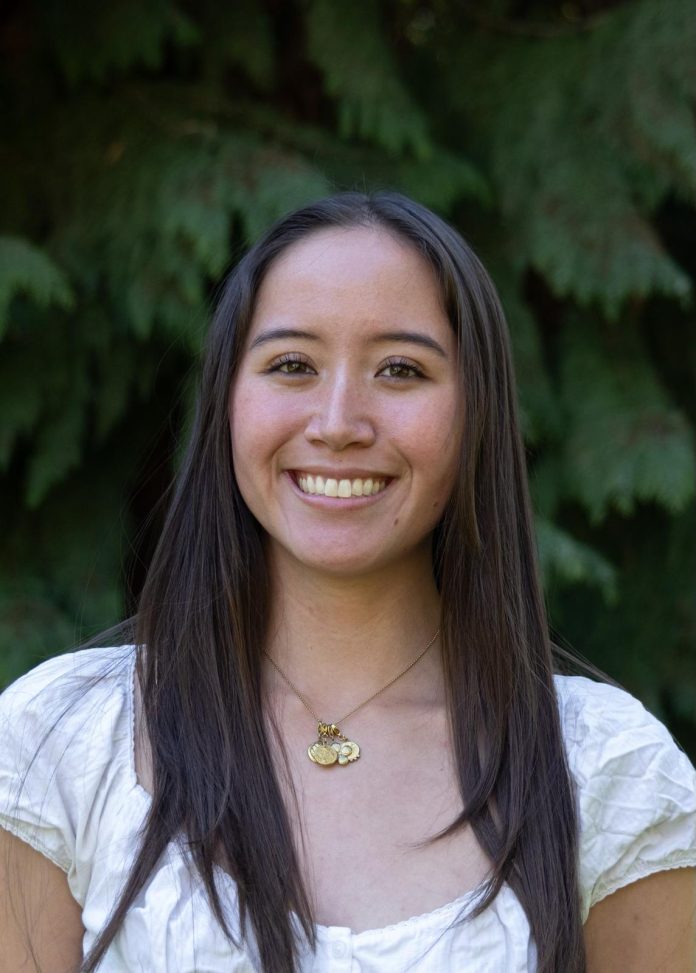Sliding drapes over the bus window had chirped near my head, one bump after the next. The six hour ride to Kumasi hadn’t felt necessarily long, but my peers in my program cohort were all crammed in together. Legs sprawled out where they could. Mine laid over my friend Kenzee’s legs – as hers stretched under, and we rode down pot-ridden pavement on our way to the Garden City.
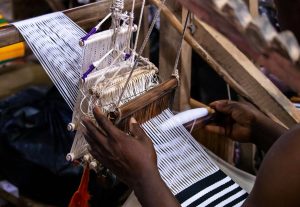
Kumasi is home to the Ashanti Kingdom and the three days I spent exploring and learning about the area proved to show how deeply rooted the history of the Ashanti Kingdom rests in the city now.
Kente (cloth made of hand-woven strips of silk and cotton) was created in Ghana and originates from the town of Bonwire, in the Ashanti Region. I had the opportunity to go with my cohort and visit the Garden City of Ghana, and also learn how to actually weave kente cloth.
I had hobbled on one leg as I had taken off my sandals, sliding into a station where a strip of kente cloth was being weaved. All to say, it did take one or two tries, or maybe even five, if I am being honest – before my hands drifted into a rhythm, in tune with my feet, which pushed and pulled the strands of string, slowly creating a few rows of the kente cloth pattern.
I’ve spent most of my time in Accra, while being in Ghana, and over in Kumasi, it became clear that while strolling through the streets and passing by buildings, I noticed how much more prevalent Adinkra symbols were painted on the sides of restaurants, carved into chairs, and the casual use of them in decor was much more prevalent, compared to Accra.
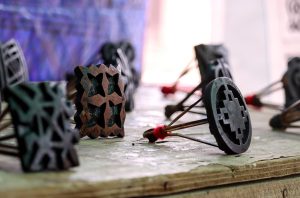
Adinkra are symbols which represent concepts and proverbs. They originate from the Akan people of Ghana and are found and used in practically anything. I’ve seen them used in fabrics, for decor and jewelry. I purchased a brass ring in Kumasi with the Adinkra symbol ‘Adinkrahene’, which represents authority, greatness and firmness.
I visited David Adinkra Works & Training with my peers, where I learned about the history of Adinkra symbols. Everyone in my cohort and I were able to choose an Adinkra stamp and mark a piece of cloth. The symbol I chose was ‘Afafanto’, which is the symbol of gentleness and represents a butterfly.
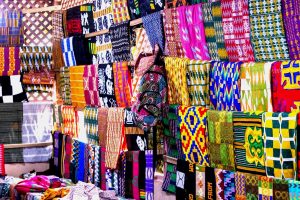
As my time in Ghana continues, I’ve grown to slowly learn what different symbols mean, along with recognising them while out. Sankofa, Aya and Odenkyem are the three symbols I have seen the most, thus far.
The week leading up to the Kumasi trip, I had heard about how we would be visiting the second largest open-air market place in West Africa, Kejetia Market. I had seen a singular photograph, prior to the trip, of a large building filled with thousands of stalls. I thought to myself how busy it must be around that building, since the market was in there.
That initial impression shattered as we drove up towards the market. The streets were packed. Not just by people trying to enter the main building, but by vendors with stalls set up for themselves in every nook and cranny of the street. This market was not limited to a singular building, but seemed never ending, as we peered down streets stacked with umbrellas and vendors.
My program cohort and I abandoned our bus and began to walk towards the main market building. I’m sure I passed hundreds of stalls on that fifteen minute walk. I dodged cars stuck in the chaos, swerved vendors who were trying to make a sale and managed not to get lost in the haze of it all. I was astonished. Each road was packed and if I had known what I was walking into, I would have brought some running shoes.
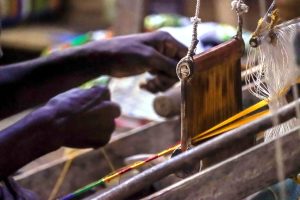
I explored the main building for an hour and marveled at the liveliness what surrounded me. I had visited markets in Accra, but over in Kumasi, at the Kejetia Market, it was a different sort of madness. My cohort had agreed to meet up outside of the main market building after we explored and shopped.
I took that time while I waited for the rest of my peers to watch as people went about their business. I took an hour to explore one level of the main building and its craze, and outside, everything seemed to be just the same. Every color of sandal possible could be found, soccer jerseys from around the world were being sold, and if you needed a phone, there was an entire building nearby dedicated to tech.
Kejetia Market was easily a memorable way to end my stay in Kumasi. The city offered me a glimpse to another side of Ghana, with an energy and vibrancy I won’t be forgetting anytime soon.
As my time continues in Accra, I’ll remember that over in Kumasi, there is a spirit I discovered, deeply rooted in the people’s history and tradition.
By Anna Liv Myklebust

